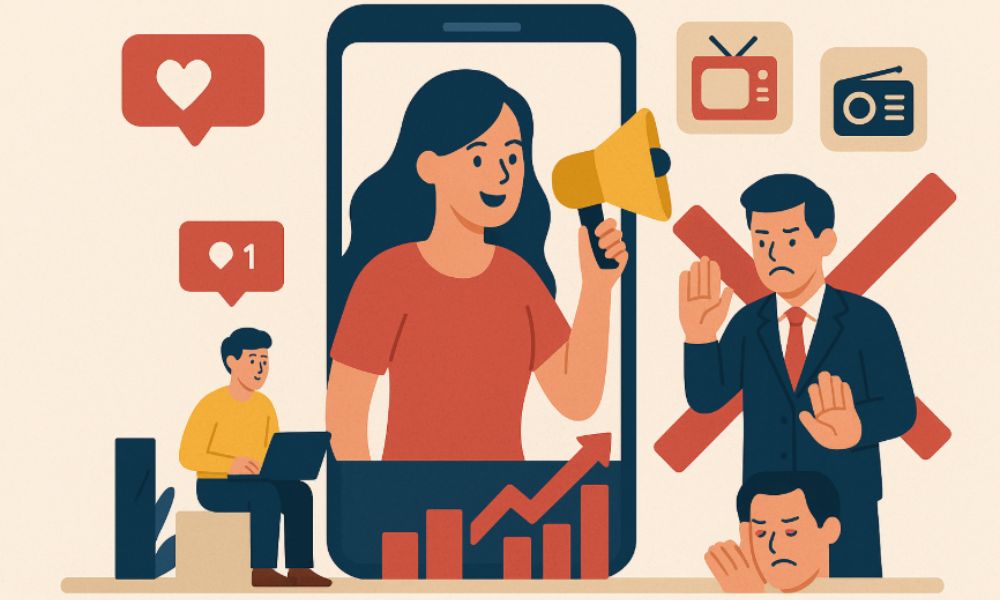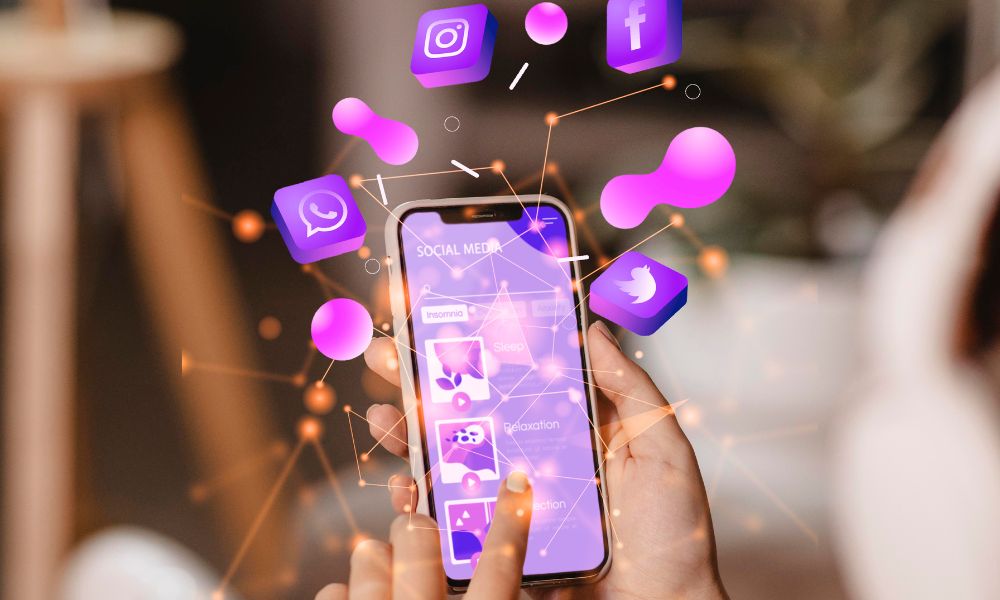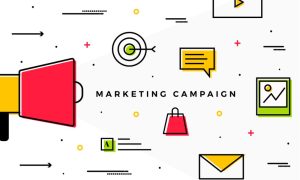
You’re mindlessly scrolling TikTok after dinner when your favorite foodie creator takes that first, perfect bite of some new spicy ramen. Before they’ve even finished chewing, you’re already tapping “Order Now.”
Now think about the last billboard you saw. Can you even remember what it was for?
This shift isn’t just about attention spans or platform preferences. After running hundreds of campaigns at Hypefy, I’ve seen brands realize something important: the influencer marketing advantages aren’t just hype. They consistently outperform traditional channels across every metric that matters: trust, cost efficiency, adaptability, speed, and engagement.
Let me walk you through why influencers have become the marketing muscle your brand probably needs, and how you can actually make these advantages work for you.
The 8 Biggest Benefits of Influencer Marketing I’ve Seen Firsthand
Think about the last time you bought something because a creator you follow mentioned it. That simple, authentic moment highlights why influencer marketing works so well. Beyond visibility, it brings trust, engagement, and insights that traditional ads rarely deliver.
1. How I’ve Seen Influencer Marketing Deliver Real Value and Brand Exposure
One of the first influencer marketing benefits I noticed when running campaigns at Hypefy is just how much more visibility brands get compared to traditional ads. Instead of fighting for attention with billboards or banner ads, your brand becomes part of the content people already love to consume.
Take Daniel Wellington. Remember when everyone suddenly had those minimalist watches? They didn’t blow their budget on magazine spreads. Instead, they found micro-influencers who naturally wove those watches into their morning coffee posts and lazy Sunday content. The result? A 15% sales lift at half the cost per acquisition of their traditional magazine ads.
That influencer recommendation hits your brain the same way a friend’s suggestion does. In a world drowning in banner ads, that emotional shortcut is marketing gold.
2. Why Trust and Loyalty Are the Influencer Marketing Benefits I Notice Most
If there’s one thing I’ve learned from influencer campaigns, it’s that people don’t just follow creators, they trust them. Traditional ads shout for attention. Influencers open the door and invite you into their world.
I’ve watched audiences stick around for years, seeing morning coffee routines, small wins, and even the failures creators share openly. That consistency builds a bond psychologists call a parasocial relationship, one-sided, but powerful enough to feel like friendship.
And here’s the kicker: Nielsen reports that 92% of people trust recommendations from individuals they know. With influencers, that “knowing” happens entirely through a screen, but it still works. Their word hits your brain the same way a friend’s suggestion does.
That’s why I see influencer marketing as more than promotion, it’s about building loyalty that lasts longer than a single campaign.
3. I’ve Seen Influencer Marketing Deliver a Strong ROI
One of the biggest advantages I’ve seen in influencer marketing is just how far your budget stretches compared to traditional campaigns. With old-school advertising, you’re juggling agencies, production houses, and media buyers, every handoff eats up time and money.
With influencers, it’s different. They wear all the hats: strategist, creative director, production team, and media channel rolled into one. You pay one fee and get everything from concept to distribution.
I think about Gymshark a lot here. They went from a small UK startup to a $1.5 billion brand by leaning on fitness micro-influencers. No endless approval chains, no bloated budgets, just authentic creators making content their audience wanted to see. And the ROI? Off the charts.
When I look at campaign data, it’s clear: influencers deliver stronger returns because they combine creativity, distribution, and engagement in one streamlined package.
4. Influencers Help Me Reach Audiences I Couldn’t Reach Otherwise
One thing that always stood out to me about influencer marketing is how precise it can be. Building your own audience from scratch takes years, and even then, engagement can be painfully low. But with influencers, you step straight into a community that already exists, and they actually care.
I’ve seen this work across the most specific niches you can imagine. Paleo baking, sustainable camping gear, even vintage motorcycle restoration, there’s always an influencer whose followers match that exact profile. And those followers don’t just scroll past; they interact, comment, and take action.
The numbers back it up too. Micro-influencers with 10K to 100K followers average around 7% engagement on Instagram. Compare that to the 1–2% most brands struggle to get on their own content.
For me, it’s like the difference between putting up a billboard on a busy highway and walking into a room where every single person is already interested in what you’re offering.
To streamline your influencer selection process, you can use an influencer discovery tool that filters by niche, audience, and performance.
5. Influencer Partnerships Helped Grow Brand Socials Faster
Another benefit I’ve seen again and again is how influencer campaigns don’t just boost sales, they also grow your own social media following. Every collaboration introduces your brand to a new audience that already trusts the creator.
I’ve watched it happen in real time. A single influencer post drives traffic to a brand’s profile, and suddenly, their follower count jumps overnight. But it’s not just about numbers. These are followers who actually stick around, because they came through someone they already trust.
When you consistently partner with influencers who align with your brand values and style, you don’t just get one-off exposure. You build a community that continues engaging with your content long after the campaign ends.
That’s one of the most underrated benefits of influencer marketing in my experience, it fuels growth on channels you own, not just rented reach.
6. Why I Call It the “Halo Effect” of Influencer Marketing
Something I’ve learned while working with creators is that their influence goes beyond a single campaign. When the right influencer adopts your product authentically, it casts a kind of halo over your brand, making you feel part of a bigger cultural moment.
I’ve seen it happen with trends that explode overnight. Remember when TikTok was filled with silk press hair transformations? Traditional brands couldn’t have jumped on that in time, the approval cycles alone would take weeks. But influencers? They were already there, posting content in hours, and the brands they featured instantly felt relevant.
To me, that’s the halo effect: the credibility, timeliness, and cultural alignment you get when your brand rides alongside creators who already understand the moment. It’s not just exposure, it’s borrowed relevance. And that’s something traditional advertising can’t buy.
If you prefer to lean on expertise, an influencer marketing agency can manage strategy, outreach, and reporting for you.
7. How Influencer Marketing Helped Me Connect With Younger Audiences
If there’s one audience that’s hardest to reach with traditional ads, it’s Gen Z. They’ve grown up skipping commercials, installing ad blockers, and scrolling past anything that feels like a pitch. But influencers? They’re part of their everyday entertainment.
I’ve seen this difference firsthand. When a creator talks about a product on TikTok or Instagram, it doesn’t come across as advertising, it feels like a friend sharing something they love. That makes younger audiences listen in a way they’ll never do with a TV spot or banner ad.
For me, that’s one of the most valuable influencer marketing benefits. It’s not just about reach, it’s about relevance. Creators speak the language of new generations authentically, and that connection is something brands can’t manufacture on their own.
8. How Influencers Gave Us Insights We Couldn’t Get Anywhere Else
One of the most surprising advantages I’ve seen in influencer marketing is how much you can learn from it. Campaigns aren’t just about exposure, they’re like real-time focus groups with an audience that doesn’t hold back.
I remember working with a skincare brand that partnered with beauty influencers. After watching a wave of unboxing videos and reading the comments, we realized customers cared way more about ingredient transparency than fancy packaging. The brand pivoted overnight, leading their messaging with formulation details instead of aesthetic shots, and the response was incredible.
That’s the kind of feedback you rarely get from traditional ads. With influencers, you don’t just market your product, you also gain insights into what people actually want, straight from the communities you’re trying to reach.

Advantages of Influencer Marketing vs. Traditional Channels
After years of running campaigns, I’ve seen the differences between influencer marketing and traditional advertising up close, and honestly, they’re hard to ignore.
With traditional ads, you’re interrupting. People mute the TV, scroll past the banner, or skip the pre-roll. With influencer marketing, you’re being welcomed into content that people are choosing to watch. That alone changes the game.
The costs tell a similar story. Traditional campaigns involve so many moving parts: agencies, production, and media buys. Influencer campaigns cut all of that down. One creator can handle strategy, content, and distribution in a way that feels natural and far less expensive.
Speed matters too. I’ve watched influencers turn around content in days, while traditional campaigns can take weeks just to get approvals. In fast-moving markets, that agility is priceless.
And then there’s engagement. I’ve seen micro-influencers drive 7% engagement rates, something you’ll almost never see on a brand’s own channels. Add to that the constant stream of feedback from audiences, and it becomes clear: influencers don’t just promote, they teach you about your market as well.
So when I weigh it all out: trust, cost, speed, engagement, and insights, influencer marketing comes out ahead almost every time. Traditional channels still have their place, but they can’t compete with the kind of authentic connection influencers bring to the table.
Here’s how the two compare at a glance:
- Trust: Influencers build relationships that feel personal, while traditional ads interrupt.
- Costs: Influencer campaigns are streamlined, cutting out agency and media-buying overhead.
- Speed: Creators can launch content in days; traditional campaigns often take weeks.
- Engagement: Micro-influencers drive ~7% engagement vs. 1–2% on most brand-owned content.
- Insights: Influencers act like real-time focus groups, while traditional ads offer little feedback.
Making It Work for Your Brand
After seeing what works and what doesn’t across hundreds of campaigns, here’s how I’d approach your first influencer marketing push:
- Mix your creator types strategically: Nano and micro-influencers for engagement and authenticity. Macro for reach. Vertical experts for credibility. Each serves a different purpose in your overall strategy. Hypefy provides you with influencer lists, ready to use, not with search parameters for you to do it manually.
- Write creative briefs, not scripts: Give creators your brand guidelines and key messages, then let them translate that into their own voice. The magic happens when it feels native to their content, not like an obvious ad read. That is what our AI brief builder already incorporates, so you don’t need to worry about it.
- Track everything obsessively: UTM links, affiliate codes, platform analytics. Figure out what resonates, then double down fast. The brands winning at this are optimizing weekly, not quarterly. At Hypefy, we track everything that can be tracked on each influencer marketing campaign.
Truth About Marketing Right Now
Traditional advertising still has its place. But in an attention-scarce world where everyone has ad blockers and streaming subscriptions specifically to avoid interruptions, the trust and creative firepower of influencer marketing is hard to ignore.
If you’re still putting most of your budget into TV spots and display ads, you’re probably leaving performance on the table. Not because those channels are inherently bad, but because you’re competing for attention in spaces where your audience actively tries to avoid marketing messages.
The next time you scroll TikTok and see a creator spark instant action, remember: that’s the future of marketing, and the advantage is yours if you choose it.
Ready to test this with your brand? Pick a niche creator whose audience overlaps with your customers. Set clear KPIs. Give them creative freedom within your brand guidelines. Then watch what happens to your engagement rates and conversion metrics.
The future of marketing isn’t a 30-second spot that interrupts what people want to watch. It’s becoming part of the content they’re already choosing to consume. That shift changes everything.




